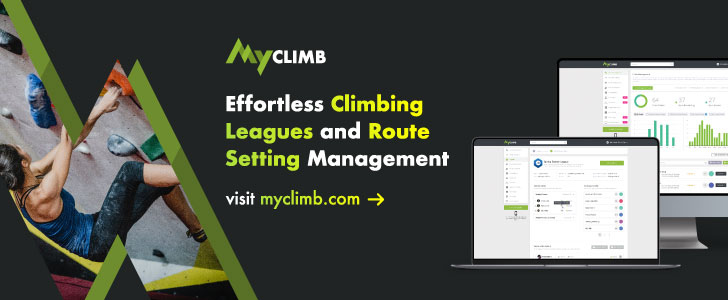Ask a Lawyer is a recurring column where attorney Jason Pill answers questions submitted by people who work in the climbing industry. For this edition, Pill examines a new set of COVID-19 emergency standards that are required for California businesses (including climbing centers). Since COVID-19 news is evolving so quickly, there is a chance that similar standards could eventually be required in other states as well. Beyond that, there is value in every gym—in every state—reviewing these standards and considering them, even if the implementation is not required by law.
If you have a legal question that you’d like Pill to tackle about your gym in a future installment of Ask a Lawyer, you can submit it here.

QUESTION: “My climbing center is located in California and is currently open. Do the new COVID standards for employers impact me? If so, what do they require I do?”
PILL: In late November, California’s Department of Industrial Relations’ Occupational Safety and Health Standards Board adopted emergency temporary standards to protect workers from hazards related to COVID-19. Shortly thereafter, the Office of Administrative Law (OAL) approved the emergency standards, and the standards became effective on November 30, 2020. Notably, the new standards apply to all employees and all places of employment, unless employees are working from home, or unless there is only one employee who does not have contact with other persons—this effectively includes all climbing gyms still operating within the state.
The as-proposed emergency standards are available here. The primary component of the standard is section 3205, which is modeled after the Injury and Illness Prevention Program required of all California employers and requires a written plan that addresses hazard identification, evaluation and correction; investigation; training; physical distancing, face coverings, and other engineering and administrative controls; reporting and recordkeeping; and return to work criteria.
A Long—But Important—List
More specifically, the required program for businesses must contain or address the following aspects:
Communication: Contain a system for communication, including a form that details employee reporting mechanisms, procedures or policies for accommodating employees with medical or other conditions that put them at increased risk of severe COVID-19 illness, provides information about access to testing, and communicates information about COVID-19 hazards and the employee’s policies and procedures; Contain a system for identification and evaluation of COVID-19 hazards, including that employers must evaluate all interactions, areas, activities, equipment etc. that could potentially expose employees, screens employees for COVID-19, and includes policies for immediately addressing COVID-19 cases at work to prevent or reduce transmission;
Air Flow and Filtration: Evaluate how to maximize the quantity of outdoor air and whether it is possible to increase filtration efficiency; Include a process for conducting periodic inspections to identify unhealthy conditions, work practices, and work procedures related to COVID-19 and to ensure compliance with the company’s COVID-19 policies and procedures;
Contact Tracing: Contain an effective procedure to investigate COVID-19 cases in the workplace, including verifying case status, receiving information regarding test results, onset of symptoms, and identifying and recording COVID-19 cases; When there has been a COVID-19 case at the place of employment, the employer must determine the date/time the case was last present, the date of the positive test, and the date of the first symptom and evaluate the situation to determine who had a COVID-19 exposure. Employers must provide notice of a potential COVID-19 exposure to exposed employees within one business day in a way that does not reveal personal identifying information;
Testing and Training: Employers must offer COVID-19 testing at no cost to employees during their work hours to all employees who had a potential COVID-19 exposure in the workplace and provide certain information and benefits; Investigate whether any workplace conditions could have contributed to the risk of COVID-19 exposure and what could be done to reduce exposure to COVID-19 hazards;
Employers must implement effective policies to correct unsafe or unhealthy conditions in a timely manner; Employers must provide effective training and instruction to employees that includes the employer’s COVID-19 policies, information regarding COVID-19 benefits to which employees may be entitled under applicable, federal, state or local laws or the employer’s own leave policies, the fact that COVID-19 is an infectious disease, the methods for transmission, importance of recognizing COVID-19 symptoms and staying home when sick, physical distancing, face coverings, hand hygiene, and other controls that that help reduce the spread of COVID-19 given that particles containing the virus can travel more than six feet, especially indoors;
Distancing and Masks: Employers must separate employees from other persons by at least six feet (except for momentary exposure while people are in movement) unless an employer can demonstrate that is not possible;
Employers shall provide face coverings and ensure they are worn by employees indoors and outdoors when employees are less than six feet away, subject to certain exceptions. Employers must implement measures to communicate the face covering requirement to non-employees and must develop policies to minimize employee exposure to COVID-19 hazards originating from persons not wearing a face covering, including a member of the public;
Where physical distancing isn’t possible, employers shall install cleanable solid partitions that reduce aerosol transmission between the employee and other persons;
Cleaning, Handwashing, PPE: Employers shall implement cleaning and disinfecting procedures and inform employees of such cleaning protocols including the frequency and scope. Employers shall prohibit sharing of PPE and other items with which employees regularly come into contact;
Employers must evaluate handwashing facilities, determine whether additional facilities are needed, and provide employees with hand sanitizer and time to hand-wash; Evaluate the need for PPE and respiratory protection (when physical distancing cannot be maintained);
Reporting: Employers are required to report COVID-19 cases at the workplace as required by law and must report any COVID-19 related serious illness or death of an employee occurring in a place of employment or in connection with any employment; The order also requires employers to keep record of COVID-19 cases and maintain all information confidentially. Testing and other services must be provided in a way that ensures confidentiality of employees.
Positive Cases: Employers must exclude COVID-19 cases from the workplace until 24 hours have passed since a fever of 100.4 or higher, COVID-19 symptoms have improved, and 10 days have passed since the onset of symptoms. Furthermore, employers must exclude employees with COVID-19 exposure from the workplace for 14 days following exposure. Employers shall continue and maintain an employee’s earnings, seniority, and all other earnings if employees are otherwise able and available to work. This does not apply to periods of time during which the employee is unable to work for reasons other than protecting persons at the workplace from possible COVID-19 nor does it apply where the employer demonstrates the COVID-19 exposure is not work-related.
The Necessity of Availability
It’s important to note that the written program required by the aforementioned standards must be made available at the workplace to employees, authorized representatives, and to certain California state agencies immediately upon request. The standards also set forth additional requirements if a workplace is identified by a local health department as the location of a COVID-19 outbreak (meaning, three or more cases in a 14-day period) or a major COVID-19 outbreak (20 or more cases in a 30-day period).
The emergency standards will remain in effect for 180 days unless the OAL approves a readoption of the standards during that time period. From there, the temporary standards can become permanent if the Board submits them through the regular rulemaking process.
Recognizing that most businesses would not have a written COVID-19 prevention plan in place by November 30, 2020, California intends to take a business’s good faith efforts into account and to offer “a little bit of flexibility” when evaluating compliance with the new standards. Nonetheless, businesses should expect that the State will issue citations based on non-compliance with the new standards and should not rely on “flexibility” in enforcement.
Note: This column offers general advice and is not intended to be used as direct legal counsel. Gym owners should consult a lawyer for their facility’s specific legal matters. Pill can be contacted directly here.

Jason Pill is a longtime climber and an attorney with Phelps Dunbar, LLP in Tampa, Florida. He practices in the area of Employment Law by advising clients, including climbing gyms, on workplace issues and representing clients in state and federal court when litigation becomes unavoidable. Additionally, Jason managed a climbing gym before embarking on a legal career, and he currently serves on USA Climbing’s Board of Directors and as the Chairperson of USA Climbing’s Ethics Committee.










